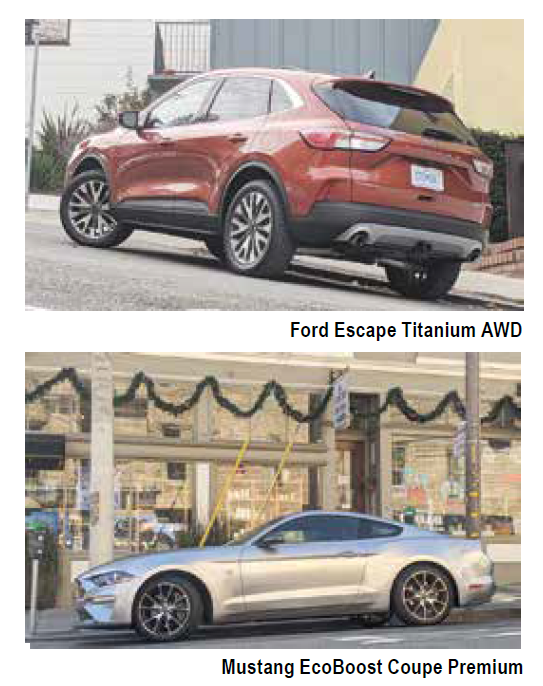Sport Coupe or Crossover?

By Philip Ruth–
Got $39,000? Then you can buy the average new car. “Sticker shock” comes to mind, which is ironic when you consider that phrase was first coined in the 1970s, and a 1980-model average new car would cost only $24,000 in today’s dollars.
Back then, prices were hiked after conforming to new safety and emissions standards, while today it’s tech-driven features and prestige-truck ambitions that are inflating the costs. Modern longer car loans would have been absurd back then, considering the intrinsic futility of an eight-year term on a 1980 Pinto. Here in 2021, the extra debt time helps buyers rationalize specifying extras that, in their best light, will future-proof the purchase.
But let’s say you’d like to hold close to the average price, and you’re not really sure what you want. All your friends have some kind of SUV or crossover, but perhaps practicality isn’t first on your list. If you stop by a Ford dealer with this thinking, then these two testers, an Escape Titanium AWD and Mustang EcoBoost Coupe Premium, would directly compete for your attention.
Prices on these Escape and Mustang testers were closely matched. Escape Titanium AWD is the premium trim, with the biggest engine and the most equipment. The EcoBoost Coupe Premium is about mid-level for the Mustang, which climbs upward with the Bullitt on up to the Shelby entries.
The tested Escape was $37,125, the Mustang $38,615—similar prices for very different vehicles. The Escape is a compact crossover that was newly re-thought for 2020, while the Mustang’s sport-coupe platform is tried and true, with an attitude rooted in American-car mythology.

Open the doors, and both are quintessential Ford, albeit in its various forms. The Escape’s interior reflects the modern interpretation, which frustratingly favors styling over material finish. There’s some softness in the plastics surrounding you, and there’s also some hardness.
After the Escape, the Mustang feels as cushy as your Grandmother Margaret’s Torino Brougham, with cushy seats and padded door panels. You sit low and long in the Mustang, and dialing up the thigh support makes you feel clamped in. No crossover can replicate that.
Some crossovers do seem to replicate the Mustang’s limited rear visibility, and the unexpected gift of the Escape’s 2020 redesign is its low beltline, which is essentially the level of the windowsill. Crossovers are notorious for their high beltlines, but the new Escape deflates that bloat with lower sills and taller windows. It’s worthy of consideration for city-driving visibility alone.
Over the road, the Escape Titanium AWD felt agile with its 2.0-liter EcoBoost engine and eight-speed automatic. The Mustang went beyond that for access to sheer speed, with its 2.3-liter High Performance EcoBoost engine and ten-speed automatic. Skip the automatic for the standard six-speed manual—on San Francisco’s hills, the ten-speed was busier than an ensemble cast 10 minutes before curtain.
Comparable pricing on such different vehicles can challenge the assumptions of your own needs. It might come down to which one you like best.
Philip Ruth is a Castro-based automotive photojournalist and consultant with an automotive staging service.
Published on February 11, 2021








Recent Comments